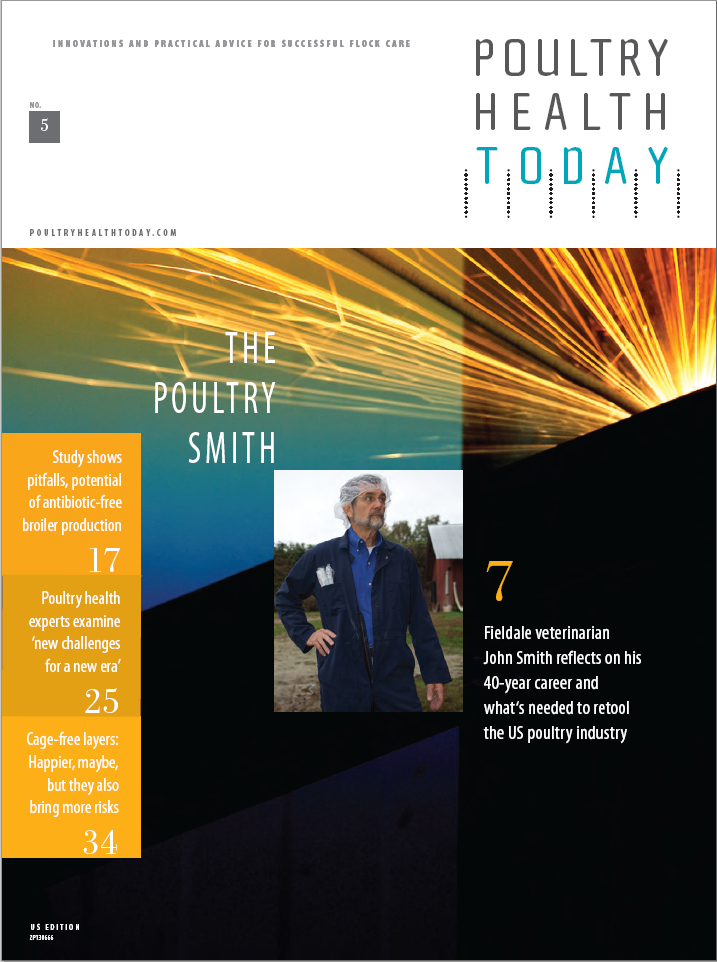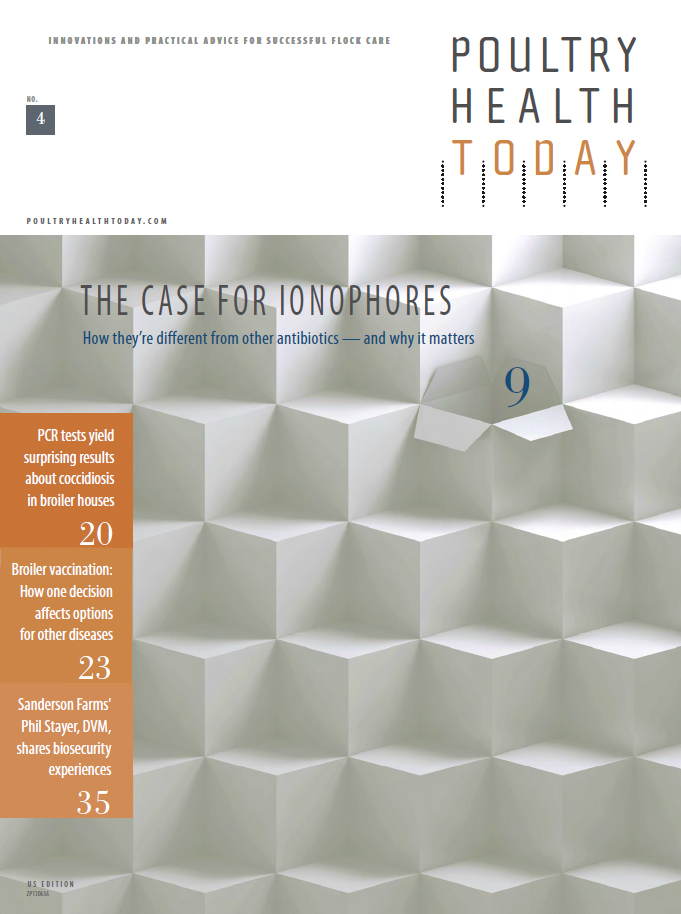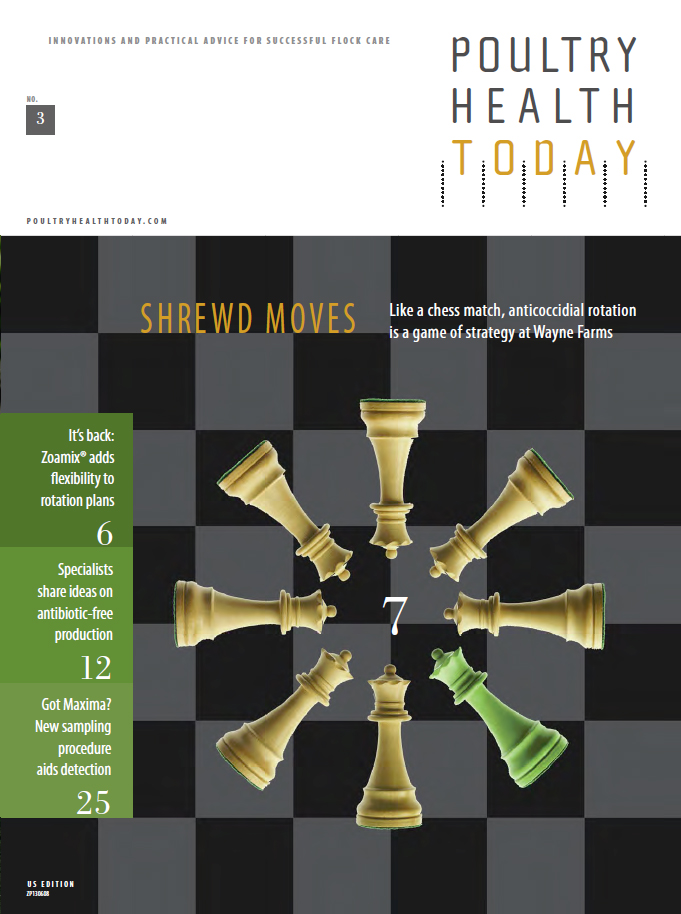

How do antibiotics promote growth?
Under the new FDA guidelines, in-feed antibiotics with FDA-approved performance claims can still be used to promote growth and improve feed efficiency - as long as they are not considered "medically important" to humans.
That's good news for efficiency-minded poultry producers looking to meet escalating world demand for healthy, safe and affordable chicken and turkey. Still, the words "growth promotion" and the role these antibiotics play in poultry production are often misinterpreted by those outside of production.
For example, one non-medically important poultry antibiotic that will retain its FDA-approved performance claims is bacitracin methylene disalicylate (BMD®). The product is indicated for "increased rate of weight gain and improved feed efficiency" in both broilers and turkeys when used at the rate of up to 50 g per ton of feed. Coincidentally, BMD is also labeled for broilers at the rate of 50 g per ton for the prevention of necrotic enteritis caused or complicated by Clostridium spp. and other organisms susceptible to the product's active ingredient.
'BIT OF A MISNOMER'
That begs the question, does the antibiotic simply make birds grow - or is improved performance really secondary to improved health that enables birds to reach their full genetic potential?
"The term growth promotion in itself is accurate but may be a bit of a misnomer,"says Steven Clark, DVM, senior poultry technical services veterinarian, Zoetis Inc.
For a long time, it has been thought that subtherapeutic doses of in-feed antibiotics enhance growth by modifying intestinal microflora, although exactly how isn't known for sure and is still up for discussion, he says.
Explanations have included a reduction in subclinical infection, decreased production of microbial products that have toxic effects, depressed microbial competition within the bird for nutrients and enhanced absorption, according to the Poultry Science Association.1
CHANGES IN MICROFLORA
As far back as 1992, investigators from the University of California-Davis conducted studies indicating that feeding antibiotics may permit growth by preventing immunologic stress and associated metabolic changes.2
Another theory emerged in 2007 with publication of a paper entitled "The Nonantibiotic Anti-Inflammatory Effect of Antimicrobial Growth Promoters, the Real Mode of Action? A Hypothesis." The author argued that most antibiotics have a non-antibiotic, anti-inflammatory effect, which may in turn reduce wasted energy and spare it for production.
"Concomitant or subsequent changes in microflora are most likely the consequence of an altered condition of the intestinal wall," Professor Theo A. Niewold, PhD, of the Catholic University, Leuven, Belgium, wrote in Poultry Science.3
This theory would also explain why results with so-called growth-promoting antibiotics are highly reproducible, as opposed to those obtained by antibiotic alternatives that are aimed at microflora management, Niewold wrote.
BENEFIT TO FLOCK HEALTH
 However they work, their benefits are
well known to those involved in
poultry production.
However they work, their benefits are
well known to those involved in
poultry production.
"Today, we know that one of the primary mechanisms of action these antibiotics have in poultry is preventing subclinical necrotic enteritis caused by Clostridium perfringens," says Charles Hofacre, DVM, MAM, PhD, University of Georgia.
"A flock of chickens is like a city of 25,000 people," he told Poultry Health Today. "Someone is always going to be sick or getting sick. Not all birds in a flock may need to be treated with an antibiotic, but there is always a percentage of them that get the benefit of the drug because of low-grade intestinal illness."
This is particularly evident in flocks that for one reason or another are experiencing greater stress and, as a result, a greater disruption in their intestinal bacterial flora.
"In these flocks, we will see a bigger benefit from the use of an antibiotic at the minimum necessary dosage for prevention of subclinical or clinical necrotic enteritis," Hofacre says.
Clark agrees that antibiotics with performance claims are especially helpful for flocks in stressful situations, provided they are used judiciously. "If the birds run out of feed or the birds don't eat as well for whatever reason, they're under stress and efforts to stabilize the situation by improving intestinal health can be helpful," he says.
Hofacre and Clark see other secondary benefits from their use. By improving feed efficiency, consumers get the same amount of meat without requiring as much corn and soybeans for growth. That means more grain for other uses, Hofacre says.
"And if chickens can be grown more efficiently with less feed," Clark adds, "there's less manure output and less impact on the environment."

1 Poultry Science Association. Newly proposed mechanism for the action of antimicrobial growth promoters (AGPs) may open the door to the development of new non-antibiotic alternatives to AGPs. Press release, 2007. http://www.poultryscience.org/pr032607.asp
2 Roura E, et al. Prevention of immunologic stress contributes to the growth-permitting ability of dietary antibiotics in chicks. J. Nutr. 1992;122:2383-2390.
3 Niewold TA. The nonantibiotics anti-inflammatory effect of antimicrobial growth promoters, the real mode of action? A hypothesis. Poult. Sci. April 2007 vol. 86 no. 4.
More Issues












